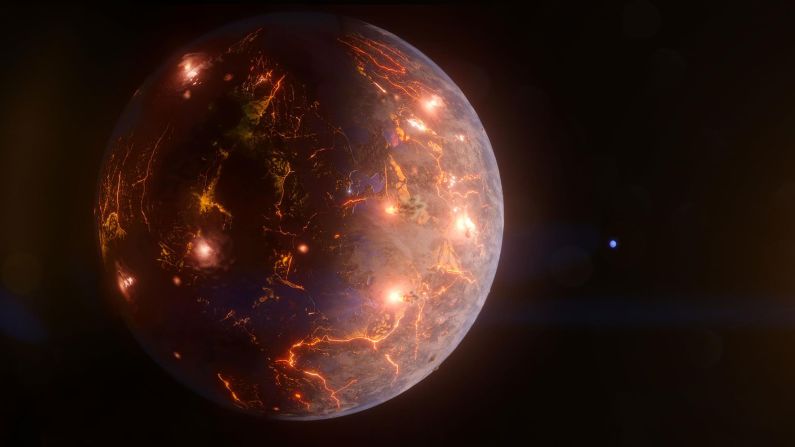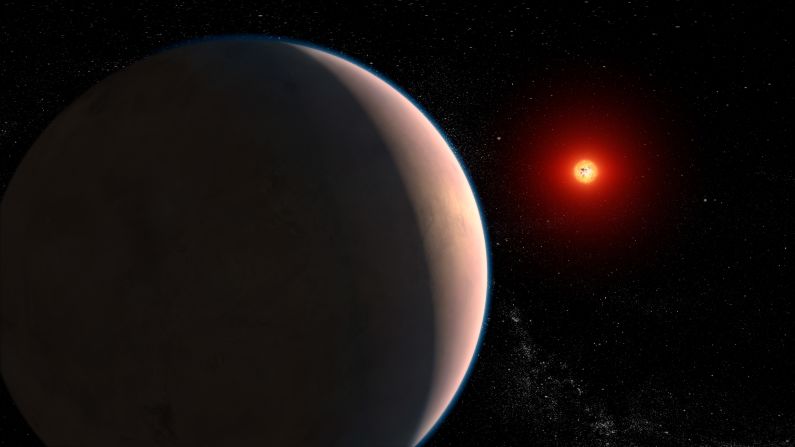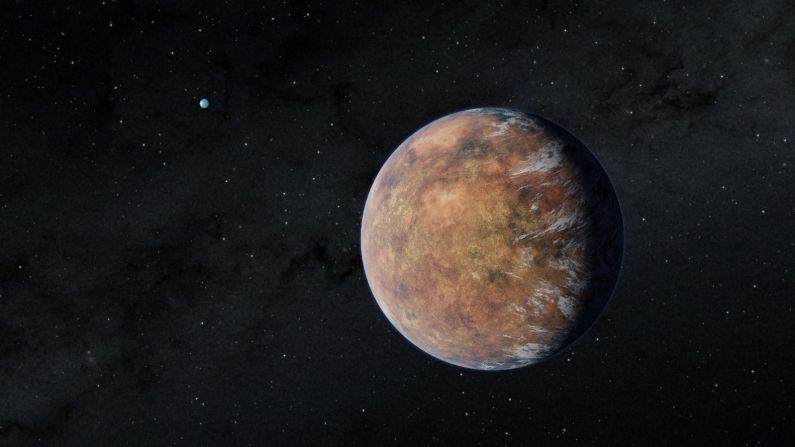About 41 light-years from Earth is an exoplanet that lost one atmosphere but has seemingly gained a new one. Scientists also believe the planet, known as GJ 1132 b, has evolved quite drastically from a gaseous world to a rocky one the size of Earth.
It’s the first time researchers have discovered a secondary, regenerated atmosphere on an exoplanet.
This exoplanet, or planet found orbiting a star outside of our solar system, likely began as a gaseous sub-Neptune. Sub-Neptunes are larger than Earth, but still smaller than gaseous worlds like Neptune.
Scientists believe the exoplanet lost its thick hydrogen and helium atmosphere because it orbits a young, blazing hot star. The star’s radiation could have stripped that atmosphere away quickly, leaving just the planetary core behind, which is about the size of Earth.
Pointing the Hubble Space Telescope at GJ 1132 b revealed a surprise. The telescope showed that the planet has developed a toxic and hazy “secondary atmosphere” made of hydrogen, methane, hydrogen cyanide and a haze of aerosol, like the smog we have on Earth.
So how did this poisonous atmosphere come to be? Researchers believe volcanic activity on GJ 1132 b to be the cause.
The detectable hydrogen in the secondary atmosphere that has formed is likely from the original atmosphere – it was just absorbed by the planet’s mantle of magma beneath a thin crust. Volcanic activity has not only released that hydrogen to create a new atmosphere, but it helps to replenish any hydrogen that is lost to space as the star’s radiation continues to strip it away.
This research will publish in The Astronomical Journal.
“It’s super-exciting because we believe the atmosphere that we see now was regenerated, so it could be a secondary atmosphere,” said study coauthor Raissa Estrela, a postdoctoral fellow at NASA’s Jet Propulsion Laboratory, in a statement.
“We first thought that these highly irradiated planets could be pretty boring because we believed that they lost their atmospheres. But we looked at existing observations of this planet with Hubble and said, ‘Oh no, there is an atmosphere there.’”
The idea that planets can evolve from one type of world to another could change the way scientist study exoplanets.
“How many terrestrial planets don’t begin as terrestrials? Some may start as sub-Neptunes, and they become terrestrials through a mechanism that photo-evaporates the primordial atmosphere. This process works early in a planet’s life, when the star is hotter,” said lead study author Mark Swain, a research scientist at JPL, in a statement.
“Then the star cools down and the planet’s just sitting there. So you’ve got this mechanism where you can cook off the atmosphere in the first 100 million years, and then things settle down. And if you can regenerate the atmosphere, maybe you can keep it.”
On the one hand, GJ 1132 b is similar to Earth in size, age and density. While Earth is perfectly suited for life now, it began as a hot planet with an atmosphere heavy with hydrogen before cooling off and increasing in oxygen.
But the planets diverge when it comes to how they were formed and thedistance from their host stars. GJ 1132 b completes one orbit around its red dwarf star host every day and a half and it’s tidally locked, always showing the same side of the planet to the star.
“The question is, what is keeping the mantle hot enough to remain liquid and power volcanism?” Swain said. “This system is special because it has the opportunity for quite a lot of tidal heating.”
Potential for volcanic activity
Tidal heating is something that happens when the energy from the way a planet rotates, as well as its orbit, creates heat inside a planet.
Exoplanet GJ 1132 b has an elliptical, or oval-shaped, orbit, which creates strong tidal forces when the planet is at its closest and farthest distances in relation to the star. There is also another planet in the system that has a gravitational tug on the planet.
Together, these forces squeeze the planet, which researchers know causes volcanic activity. Io, Jupiter’s moon, is the most volcanically active world in our solar system, and it’s constantly being pushed and pulled by Jupiter and other moons.
This particular planet likely has a thin crust that is only hundreds of feet thick, which means it probably has a cracked appearance – and those cracks allow hydrogen and other gases to escape and form the secondary atmosphere.
This discovery not only provides an intriguing glimpse at an exoplanet and the geology of an unusual world, it could shed more light on the planets in our own solar system.
“This result is significant because it gives exoplanet scientists a way to figure out something about a planet’s geology from its atmosphere,” said study coauthor Paul Rimmer, a postodoctoral fellow at the University of Cambridge, in a statement.
“It is also important for understanding where the rocky planets in our own Solar System — Mercury, Venus, Earth and Mars, fit into the bigger picture of comparative planetology, in terms of the availability of hydrogen versus oxygen in the atmosphere.”
Researchers could observe this exoplanet using the upcoming James Webb Space Telescope, scheduled to launch in October.
“This atmosphere, if it’s thin — meaning if it has a surface pressure similar to Earth — probably means you can see right down to the ground at infrared wavelengths,” Swain said.
“That means that if astronomers use the James Webb Space Telescope to observe this planet, there’s a possibility that they will see not the spectrum of the atmosphere, but rather the spectrum of the surface. And if there are magma pools or volcanism going on, those areas will be hotter. That will generate more emission, and so they’ll potentially be looking at the actual geological activity — which is exciting!”






































